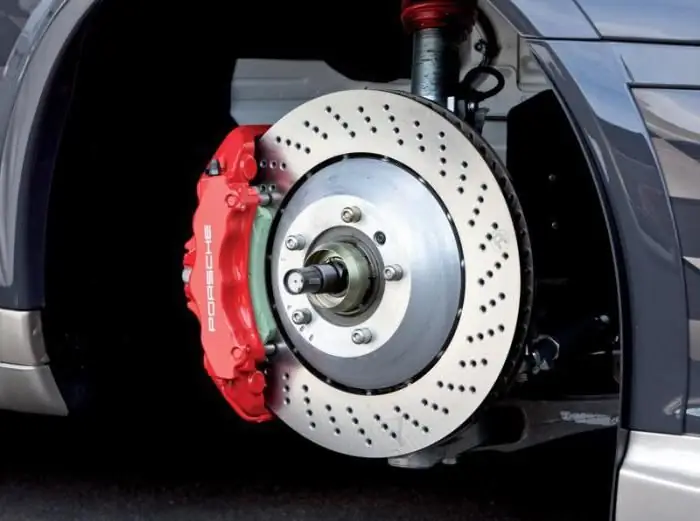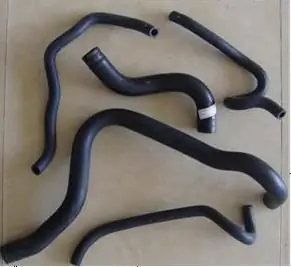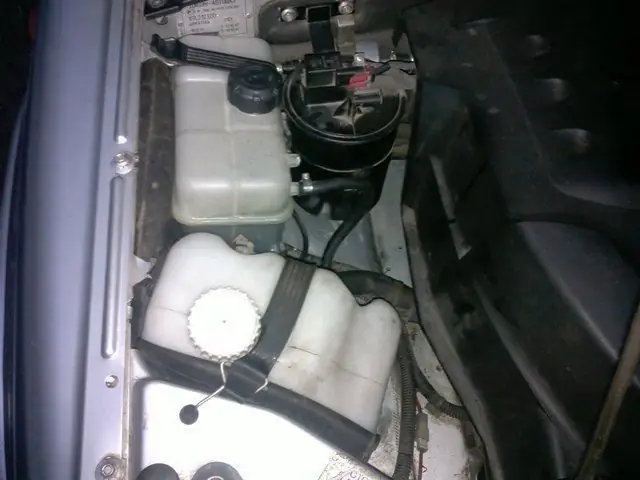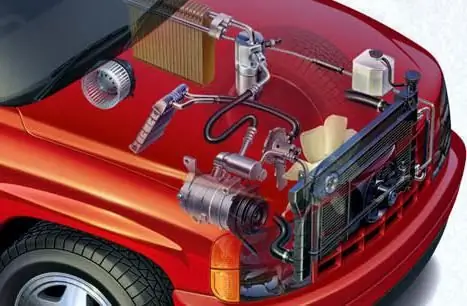2026 Author: Erin Ralphs | [email protected]. Last modified: 2025-01-22 21:14:11
In order to reduce the friction between the various mating parts of the car, especially the engine parts, to prolong their durability and improve their performance, a lubrication system is needed.

In addition to the above functions, it also removes wear products, cools engine parts, and protects the internal combustion engine from corrosion.
The engine lubrication system of a car has the following parts and devices: oil pressure sensor, oil filter, oil cooler, oil pump, engine oil pan (including oil intake), pressure reducing valve, oil channels and line.
All of the above elements of the engine lubrication system perform certain functions and each have their own purpose. In order to store oil, a crankcase is used. With the help of a dipstick, the oil level in the engine is controlled, in addition to it, an oil level sensor and an oil temperature sensor can be located there.

In order to pump oil into the system, an oil pump is needed. It is driven by the operation of the engine crankshaft, camshaft or with the help of an additionaldrive shaft. Gear type oil pumps are more common.
Of course, the lubrication system cannot do without a filter: it cleans the oil from contaminants and wear products and soot. The filter element is changed at the same frequency as the oil. An oil cooler is used to cool the oil in the engine.
To control the oil pressure, special sensors are installed, which are located in the oil line. The sensor sends an electrical signal, after which the corresponding light on the dashboard lights up.
On some models, the pressure sensor can show the oil level in the engine, and if the pressure is dangerous for operation, it does not turn on the car's engine. To maintain the oil pressure at a constant level, the lubrication system is equipped with one or two bypass valves. And their installation is usually done either in the oil pump or in the filter.

In modern engines, the lubrication system is most often used combined, that is, part of the parts is lubricated under pressure, and the rest - by gravity or by spraying.
The whole process is cyclical. While the engine is running, the pump pumps oil into the system. After that, under pressure, the oil enters the filter. After being cleaned of impurities, it will go through the channels to the connecting rod and main journals of the crankshaft, to the camshaft supports, the upper support of the connecting rod itself. The rest of the parts can be lubricated by splashing or gravity, forming the so-called oil mist. Then, under the influence of gravity, the oil flows downback to the oil pan and the cycle repeats again.
Maintenance of the lubrication system is designed to prevent possible malfunctions and breakdowns. It may include the following types of work:
- check the oil level in the crankcase, check for leakage;
- compliance with the rules when starting a cold engine;
- checking fasteners, cleaning filters and sedimentation tanks from contamination;
- oil change and flushing of the entire system.
Maintenance that the lubrication system needs can be done by the owner of the car or by professionals at the workshop.
Recommended:
Caliper guides: replacement and lubrication

Rear caliper guides are needed for several tasks. Firstly, they are responsible for the absence of the ringing of the car's brakes, and secondly, for the uniformity of braking. The main problem is that this element wears out quite quickly, although a lot depends on the brand of the car. Let's see how to lubricate yourself, and if necessary, change the caliper guides
ABS system. Anti-blocking system: purpose, device, principle of operation. Bleeding brakes with ABS

Not always an inexperienced driver manages to cope with the car and quickly reduce the speed. You can prevent skidding and blocking of the wheels by intermittently applying the brake. There is also an ABS system, which is designed to prevent dangerous situations while driving. It improves the quality of grip with the roadway and maintains the controllability of the car, regardless of the type of surface
Cooling system device. Branch pipes of the cooling system. Replacing the pipes of the cooling system

The internal combustion engine works stably only under a certain thermal regime. Too low a temperature leads to rapid wear, and an excessively high temperature can cause irreversible consequences, up to jamming of the pistons in the cylinders. Excess heat from the power unit is removed by the cooling system, which can be liquid or air
Chevrolet Niva: cooling system. Chevrolet Niva: cooling system device and possible malfunctions

Any car contains several basic systems, without the proper functioning of which all the benefits and pleasure of owning can be nullified. Among them: the engine power system, the exhaust system, the electrical system, and the engine cooling system
Car air conditioning system: diagnostics, repair, flushing, cleaning, system pressure. How to flush a car's air conditioning system?

The warm season is accompanied by frequent requests from car owners to service shops for such a service as diagnostics of the car's air conditioning system, as well as troubleshooting. We will understand the reasons for this phenomenon

